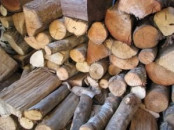Five years after OBL’s death, al Qaeda down but far from out
Group can still carry out spectacular attacks; it has taken control of significant territory in Syria, Yemen

Former al-Qaeda mastermind Osama bin Laden. PHOTO: AFP
Replaced as the preeminent global jihadist power by the Islamic State, al Qaeda nonetheless remains a dangerous threat, experts say.
US refused to give Osama bin Laden’s son death certificate for ex-al Qaeda leader
With last year’s Charlie Hebdo massacre in Paris and a wave of shootings in West Africa, al Qaeda has shown it can still carry out spectacular attacks. And in Syria and Yemen its militants have taken control of significant territory.
By the time US special forces killed bin Laden in Abbottabad on May 2, 2011, the group he founded had been badly damaged, with many of its militants and leaders killed or captured.
Dissention grew as new Qaeda chief Ayman al Zawahiri struggled in bin Laden’s place, until one of its branches, originally al Qaeda in Iraq, broke away to form IS.
IS has since eclipsed its former partner, drawing thousands of radicals to its cause and claiming responsibility for attacks that have left hundreds dead in Brussels, Paris, Tunisia, Turkey, Lebanon, Yemen, Saudi Arabia and on a Russian airliner over Egypt.
Bin Laden wanted to exploit Indian threat to take over Pakistan, documents reveal
William McCants, of the Brookings Institution in Washington, agreed that al Qaeda had lost some ground to IS, but said the organisation has recovered. “Al Qaeda has a strong showing in Syria and in Yemen,” he said.
In Syria the group’s affiliate, al Nusra Front, is one of the strongest forces fighting President Bashar al Assad’s regime, holding large parts of the Idlib province.
The local branch in Yemen, al Qaeda in the Arabian Peninsula (AQAP), has meanwhile seized significant territory in the south and southeast.
Another branch, al Qaeda in the Islamic Maghreb (AQIM), has carried out assaults on hotels and restaurants in Mali, Burkina Faso and Ivory Coast since November that have left dozens dead, including many foreigners.
Published in The Express Tribune, May 2nd, 2016.



















COMMENTS
Comments are moderated and generally will be posted if they are on-topic and not abusive.
For more information, please see our Comments FAQ